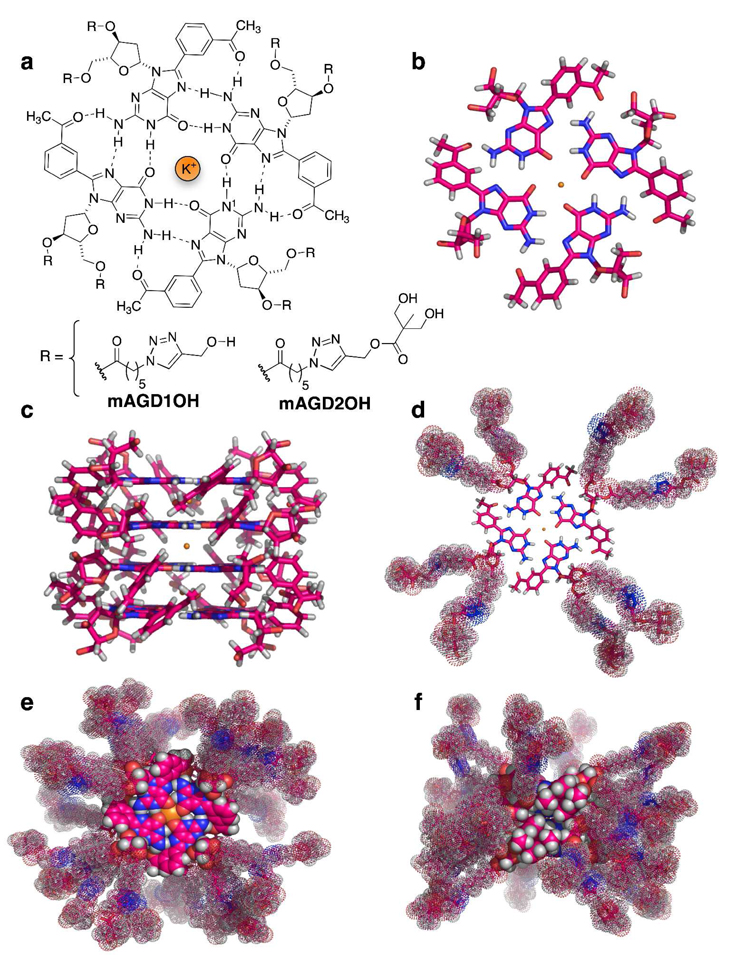Figure 1.
(a) Chemical structure of the tetrad formed by 1 and 2. (b) Top view of the tetrad shown in a. (c) Side view of the hexadecamer 216•3KI (abbreviated throughout the article as 216), formed by four coaxially stacked tetrads. In b and c the ester side chains attached to the 2’-deoxyribose rings are omitted for clarity. (d) Same as b but with the ester groups highlighted with a dotted surface. (e) Similar to d in CPK representation and with the ester groups of all the subunits shown. (f) Side view of e. In all the models the carbon atoms are magenta, the oxygen atoms are red, the nitrogen atoms are blue, the potassium cations are yellow, and the hydrogen atoms are white.

